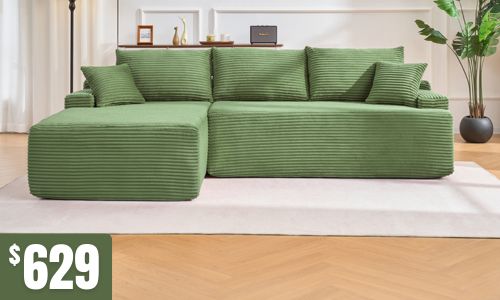Posts tagged with 'proper lighting'
 In today's fast-paced world, a well-designed home office is not just a luxury; it's a necessity. Whether you're working remotely, freelancing, or simply need a dedicated space for tasks, creating an ergonomic home office is vital for productivity, comfort, and overall well-being. In this article, we'll explore the importance of ergonomic furniture and share valuable tips to help you elevate your home office setup.
In today's fast-paced world, a well-designed home office is not just a luxury; it's a necessity. Whether you're working remotely, freelancing, or simply need a dedicated space for tasks, creating an ergonomic home office is vital for productivity, comfort, and overall well-being. In this article, we'll explore the importance of ergonomic furniture and share valuable tips to help you elevate your home office setup.
Understanding Ergonomics:
Ergonomics is the science of designing workspaces and equipment to enhance human efficiency and comfort. In the context of a home office, ergonomic design focuses on creating an environment that reduces the risk of discomfort, strain, and injury while maximising productivity. It's all about finding the right balance between comfort and functionality.
Investing in Ergonomic Furniture:
- Ergonomic Chairs: Start with a high-quality ergonomic chair that provides proper lumbar support and adjustable features. Look for chairs with adjustable armrests, seat height, and backrest recline. Your chair is the foundation of your home office comfort.
- Height-Adjustable Desks: A height-adjustable desk allows you to switch between sitting and standing throughout the day. This not only promotes better posture but also reduces the risk of prolonged sitting-related health issues.
- Monitor Stands and Mounts: Position your computer monitor at eye level to prevent neck strain. Monitor stands or wall mounts can help you achieve the ideal viewing height and angle.
- Ergonomic Accessories: Invest in accessories like an ergonomic keyboard and mouse to reduce the risk of wrist and hand strain. An adjustable monitor arm can also be helpful for positioning your screen optimally.
Tips for an Ergonomic Home Office:
- Proper Chair Height: Adjust your chair so that your feet rest flat on the floor, and your knees are at a 90-degree angle. This promotes good blood circulation and reduces pressure on your lower back.
- Keyboard and Mouse Placement: Keep your keyboard and mouse close enough that you can use them comfortably without straining your shoulders or wrists. Your arms should be parallel to the ground.
- Screen Placement: Position your monitor at eye level and about an arm's length away from your face. This minimises neck strain and ensures you're not hunching over or looking down.
- Take Regular Breaks: Incorporate short breaks into your work routine. Stand up, stretch, and move around to prevent prolonged sitting-related issues. Consider using a timer or an app to remind you to take breaks.
- Organise Your Workspace: Keep your workspace clutter-free. A well-organised desk reduces distractions and enhances your focus.
- Proper Lighting: Ensure your home office has adequate, glare-free lighting. Natural light is ideal, but if that's not possible, use task lighting to illuminate your workspace.
- Personalise Your Space: Add personal touches to your home office to make it a comfortable and inspiring place to work. Plants, artwork, and décor can create a positive atmosphere.
Your home office should be a space where you can work comfortably and efficiently. By investing in ergonomic furniture and implementing ergonomic principles, you can create a workspace that not only promotes productivity but also supports your physical well-being. Remember that a well-designed home office is an investment in your health and work performance, so take the time to set it up properly. With the right ergonomic furniture and habits, you can elevate your home office experience and make it a place where you thrive.

Where distractions and fast-paced living culture surround us, a cosy reading nook is a sanctuary for book lovers and those seeking solace in the written word. Whether you're an avid reader or just looking for a quiet corner to unwind, creating a reading nook with the right furniture can transform a mundane space into your personal haven. In this guide, we'll explore how to design the perfect reading nook using furniture that combines comfort, functionality, and style.
Selecting the Ideal Location
The first step in creating a cosy reading nook is choosing the right location within your home. Consider areas with good natural light, such as near a window or under a skylight. A corner of your living room, bedroom, or even a spare alcove can work beautifully. Make sure it's a quiet spot where you can escape from the hustle and bustle of daily life.
Comfortable Seating
Comfort is paramount in a reading nook, so start with comfortable seating. Options range from plush armchairs and recliners to bean bags and floor cushions. Choose seating that suits your style and complements the overall decor of your space. Don't forget to include enough cushions and throws for added comfort and cosiness.
A Good Reading Light
Proper lighting is essential for a reading nook. Opt for a well-positioned floor lamp, adjustable wall sconces, or a stylish table lamp that provides adequate illumination without straining your eyes. Consider warm, soft lighting to create a relaxed atmosphere.
Shelving and Storage
Every reading nook needs storage for your beloved books. Install bookshelves or floating shelves nearby to keep your reading material organised and within easy reach. You can also use shelves to display decorative items, personal mementos, or potted plants to add a touch of personality to your nook.
Side Tables and Surfaces
A small side table or two can be incredibly handy in a reading nook. Use them for placing your cup of tea or coffee, a notepad, or even a small snack. Choose tables that are the right height and style to complement your seating.
Personal Touches
Infuse your personality into your reading nook with personal touches like artwork, framed quotes, or a gallery wall of your favourite book covers. Adding a rug that's soft underfoot can also elevate the comfort and style of the space.
Privacy and Tranquillity
If possible, create a sense of privacy and tranquillity in your reading nook. You can achieve this with curtains or blinds for your windows or by using room dividers. This sense of seclusion can enhance the feeling of escape into your reading world.
Incorporate Nature
Consider incorporating natural elements into your reading nook. A potted plant, a vase of fresh flowers, or a small indoor fountain can create a calming and rejuvenating environment.
A Place for Your Feet
Don't forget a footrest or ottoman. It's a simple addition that can significantly enhance your reading experience by providing a comfortable place to rest your feet.
Regularly Update and Personalise
Your reading nook should evolve with your changing tastes and interests. Regularly update it with new books, decor, and furniture pieces to keep it fresh and inspiring.
Creating a cosy reading nook with the right furniture is all about designing a space where you can escape, unwind, and immerse yourself in the world of literature. Whether you have a dedicated room or just a small corner, by carefully selecting comfortable seating, good lighting, storage solutions, and personal touches, you can create a reading nook that becomes your favourite retreat within your home. So, grab your favourite book and get ready to lose yourself in the comfort of your newly designed reading nook.




.jpeg)

 (3).jpeg)
